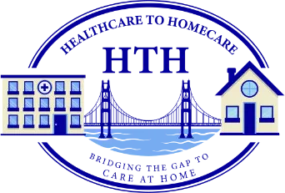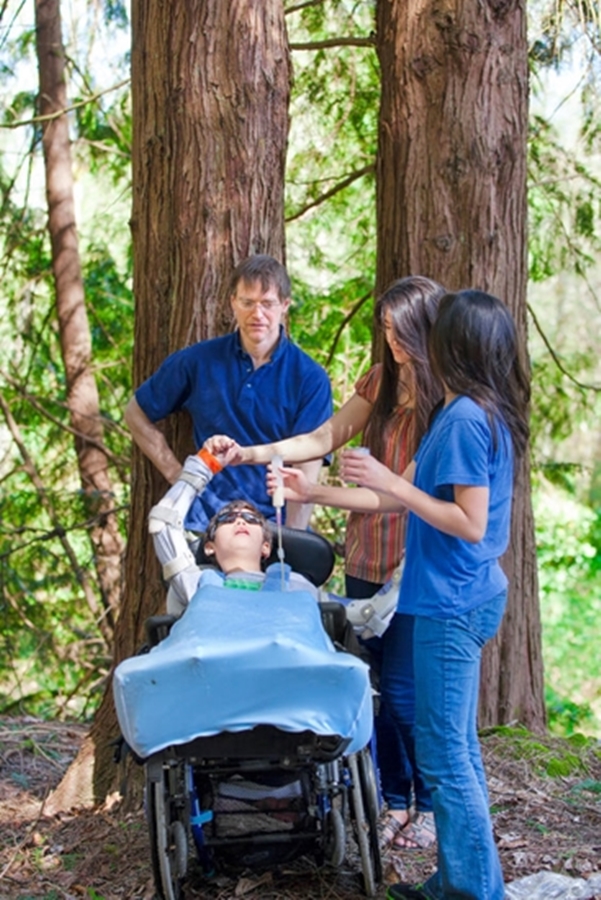Cerebral Palsy
Cerebral Palsy is a term used to describe several childhood motor disabilities that affect movement (manner of walking/gait), balance (coordination of movement), and posture (muscle tone). Cerebral refers to the brain’s cerebrum, the part of the brain that regulates motor function. Palsy refers to the inability to initiate or control voluntary movement in certain parts of the body due to a sort of paralysis of function.
In addition to challenges posed by muscle weakness related to movement and posture, associated conditions such as intellectual disabilities, seizures, vision, hearing, or speech impairments, changes in the spine or joint problems may develop.
Types of CP
Ataxic CP: Characterized by issues with motor control and movement due to cerebellum damage.
Athetoid/dyskinetic CP: Symptoms include fluctuating muscle tone and involuntary movements due to basal ganglia and/or cerebellum damage.
Hypotonic CP: A rare form of CP caused by cerebellum damage is characterized by floppy muscles, excess flexibility, and poor mobility.
Spastic CP: The most common form of CP is characterized by tight muscles and jerky movements. The cause comes from damage to the motor cortex or pyramidal tracts.
Mixed CP: Multiple areas of the brain are damaged resulting in more than one type of CP.
Causes
While it’s known that CP results from damage to the fetal or infant brain, it’s often difficult to pinpoint the exact cause of the damage. However, the following are known to contribute to the development of cerebral palsy.
- Bacterial and viral infections such as meningitis.
- Bleeding in the brain (hemorrhaging).
- Head injuries sustained during birth or within the first few years of infancy.
- Lack of oxygen to the brain (asphyxia) before, during, or after birth.
- Prenatal exposure to drugs and alcohol.
- Prenatal exposure to raw/undercooked meat or fish.
- Medical negligence or malpractice.
Signs and Symptoms
|
Physical symptoms |
Neurological symptoms |
|
Contractures (shortening of muscles) |
Buildup of cranial pressure due to fluid imbalance (hydrocephalus) |
|
Drooling |
Behavioral problems |
|
Exaggerated or jerky reflexes |
Delayed motor skill development |
|
Floppy muscle tone |
Difficulty with speech and language (dysarthria) |
|
Gastrointestinal problems |
Sensory impairments |
|
Incontinence |
Visual/hearing impairments |
|
Involuntary movements or tremors |
|
|
Lack of coordination and balance |
|
|
Problems swallowing or sucking |
|
|
Problems with movement on one side of the body |
|
|
Stiff muscles (spasticity) |
|
|
Involuntary movements or tremors |
|
Intervention Services
Both early intervention and school-aged services are available through the Individuals with Disabilities Education Act (IDEA). Part C of IDEA deals with early intervention services (birth through 36 months of age), while Part B applies to services for school-aged children (3 through 21 years of age).
Failure to Reach Milestones
If you think your child is not meeting movement milestones or might have CP, contact your doctor or nurse and share your concerns. Ask for a referral to a specialist who can do an in-depth evaluation of your child and assist in making a diagnosis.
At the same time, call your state’s public early childhood system to request a free evaluation (sometimes called a Child Find evaluation) to determine if your child qualifies for intervention services. You do not need to wait for a doctor’s referral or a medical diagnosis to make this call.
https://www.cdc.gov/ncbddd/cp/facts.html
https://www.cerebralpalsyguide.com/cerebral-palsy/
Muscular Dystrophies
What are Muscular Dystrophies?
Muscular dystrophies are a group of more than 30 genetic muscle conditions caused by mutations in a person’s genes. Over time, muscle weakness decreases mobility, making everyday tasks difficult. There are many kinds of muscular dystrophy, each affecting specific muscle groups, with signs and symptoms appearing at different ages, and varying in severity. MD can present at birth, develop in childhood or adulthood depending on the type.
Family History
Muscular Dystrophy (MD) can run in families, or a person can be the first in their family to have muscular dystrophy. There may be several different genetic types within each kind of muscular dystrophy, and people with the same kind of muscular dystrophy may experience different symptoms.
MD Is Rare
Muscular dystrophies are rare, with little data on how many people are affected. The Centers for Disease Control and Prevention (CDC) is working to estimate the number of people with each major kind of muscular dystrophy in the United States.
In general, symptoms of MD worsen over time. The conditions are a type of myopathy (i.e., disease that affects the muscles), a disorder of the skeletal muscles. Depending on the type, it can affect the ability to move, walk, and perform daily activities. It can also affect the muscles of the heart and lungs.
Some of the more common types of MD include the following:
Duchenne MD: The most common form of MD. Primarily affects children born male but those born female may have a milder form. As it progresses it affects the heart and lungs.
Becker MD: Second most common. Affects those born male though people born female may have a milder form. May appear anytime between the ages of 5 and 60 but usually strikes in the teenage years.
Myotonic dystrophy: The most common diagnosed in adulthood Affects male and female equally. Characterized by difficulty relaxing muscles after use. The condition affects the heart, lungs and creates endocrine issues resulting in thyroid conditions and diabetes.
Congenital MD: Seen at birth. Causes overall muscle weakness with possible joint stiffness or looseness. May involve spinal curvature (scoliosis), breathing issues, intellectual disabilities, learning disabilities, eye issues, or seizures.
Distal MD: Affects muscles of hands, feet lower arms and feet. Affects people in their 40s and 60s.
Emery-Dreifuss MD: Affects children and young adult makes. Tends to cause muscle weakness in your shoulders, upper arms, and shins. It also affects your heart. Progression is slow.
Facioscapulohumeral MD: Affects the muscles in the face, shoulders, and upper arms. Tends to appear before age 20. Not common 4:100,000 in US.
Limb-girdle MD: Affects muscles of upper arms, upper legs, shoulders, and hips. Affects all ages. Not common: 2:100,000 in US.
Oculopharyngeal MD: Weakens muscles in the eyelids and throat causing droopy eyelids (ptosis) and difficulty swallowing (dysphagia). Often appears in 40s-50s. Occurs in 1:100,000 Americans.
Signs and Symptoms
Muscle and movement-related symptoms include:
- Muscle atrophy.
- Difficulty walking, climbing stairs, or running.
- Stiff or loose joints.
- Irregular walking gait (like waddling or toe walking).
- Permanent tightening of muscles, tendons, and skin (contractures).
- Muscle pain.
Addition symptoms include:
- Trouble swallowing (dysphagia).
- Heart problems, such as arrhythmia and heart failure (cardiomyopathy).
- Curved spine (scoliosis).
- Breathing issues.
- Intellectual disabilities.
- Learning disorders.
Prevention?
While you cannot do anything to prevent getting one of these conditions since it’s a genetic condition, you can take steps to prevent complications.
- Eat a healthy diet to prevent malnutrition.
- Drink lots of water to avoid dehydration and constipation.
- Exercise as much as possible according to your healthcare provider’s recommendations.
- Maintain a healthy weight.
- Quit smoking to protect your lungs and heart.
- Stay up to date on vaccines.
- Obtain adequate rest and sleep.
https://www.cdc.gov/ncbddd/musculardystrophy/facts.html
https://my.clevelandclinic.org/health/diseases/14128-muscular-dystrophy



